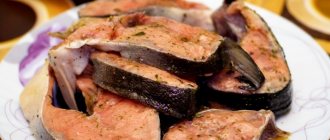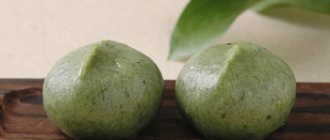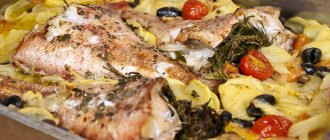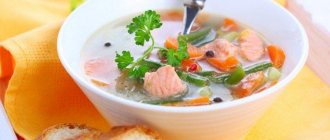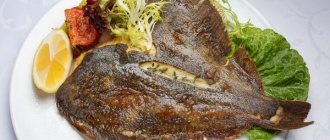How to cook Japanese rice with egg
How to cook rice? As easy as pie! There are many ways to cook rice in Japan, which is not surprising because rice is the national dish in Japan! In the land of the rising sun, rice is not only a side dish but also the main dish. This is a universal dish that can be served with any meat or with vegetables. But rice prepared according to this recipe goes just perfectly with fish! We offer you a photo recipe for cooking fried rice with egg and vegetables.
Advice:
If it is not possible to determine the grams of products, you can use our table of measures and weights.
Ingredients:
How to cook:
Rinse the rice thoroughly until the water is clear and transfer to a saucepan. Fill with water or broth and boil over low heat for 15 minutes. After the rice is cooked, rinse it with cold water.
Cut all vegetables into medium-sized cubes.
Heat a frying pan and place the chopped carrots on it. fry over high heat for 5 minutes.
After the carrots are fried, add the remaining vegetables to the frying pan. Stir and fry for another 3-5 minutes.
Now add boiled rice and soy sauce. Mix.
Move the rice onto one half of the pan. Break a chicken egg into the second half.
Immediately begin mixing the egg.
As a result, you should get a light “omelet” with lumps.
Add salt and pepper to taste and mix. Fry the rice and egg for 3-5 minutes, stirring constantly.
Step10
Transfer the rice to a plate and sprinkle with green onions. Japanese rice with egg is ready, bon appetit)))
prosto-pro-edu.ru
Japanese chicken rice
If you live in St. Petersburg, sushi delivery will help you plunge into the atmosphere of the land of the rising sun and appreciate all the delights of Japanese cuisine.
Japanese-style rice is prepared very simply and easily; this dish is one of the most popular and ordered in all Japanese restaurant chains. Rice is a symbol of fertility and prosperity. “Everyone who eats rice every day little by little strengthens his spirit, cleanses his body and protects his health,” this is what Japanese sages and all of Japan believe. And it’s not in vain. Rice is the main symbol of Japanese cuisine. Sushi and rolls are prepared from it, served as a main dish with various additives, the most popular are: seafood, chicken, vegetables, marinated pork.
The famous strong alcoholic drink called sake is prepared from rice in Japan. By the way, calling “sake” rice vodka or rice wine is completely wrong, since, firstly, this drink has a strength of no more than 18% vol., and it is not distilled, unlike vodka, but pasteurized. It is not wine because it does not ferment, but involves mold fermentation.
Japan is the only country in the world that uses only rice flour in all its confectionery products. The most common rice dish in Japan is boiled rice with egg. Add a raw egg to the boiled, hot rice, mix and add soy sauce to taste. This is the fastest and easiest Japanese rice recipe. In more complex interpretations, nori seaweed, shiitake mushrooms, raw marinated fish, and tofu cheese are added to rice.
Japanese rice with chicken and vegetables has become a favorite dish in Europe. It can be found on the menu of many Japanese restaurants. Additional ingredients when serving include fried black and white sesame seeds sprinkled on top of the rice, or, in a separate bowl, tofu cheese is served with the rice. Rice can be fried in sesame oil or butter. In sesame oil, the taste of rice is more tart and slightly sharp, while in butter it is gentle and soft. Vegetables in rice add color and make the taste of rice richer, and also enrich it with vitamins.
What a pleasure it is to have a bowl of rice in Japanese on a quiet autumn or spring evening, wash it down with green tea from a Japanese bowl, eat it not with a fork, but with chopsticks, feeling at that moment like a part of the land of the rising sun.
Japanese rice is a bright and satisfying dish. This dish can be served as a full dinner. Vegetables and chicken will make the dish more varied, and rice will be easier for the body to digest.
Rice in Japan
Rice is Japan's most important crop, and has been cultivated throughout the country for over 2,000 years. It is a staple food in Japanese cuisine and has fundamental importance in Japanese culture. It was once used as a currency, and the word for boiled rice (ご飯, Gohan) became synonymous with the general meaning of “food.” A bowl of steamed rice is a central part of traditional Japanese dishes. Rice grains are processed into various types of products, including alcohol, vinegar and flour. Below are some foods and a list of rice dishes that can be found throughout the country.
The most common types of rice.
Hakumai or white rice
Japanese short grain rice becomes sticky when cooked. Most Japanese rice is polished to remove the hard outer hull (bran). This rice is called Hakumai, or white rice. This type of rice is a staple of Japanese cuisine and is served with most dishes.
Genmai or brown rice
Unpolished Genmai rice is used much less, as it is considered not as tasty as white rice. However, recently it has become increasingly popular as a health food as it is more nutritious. The outer layer of this rice, containing most of the vitamins and minerals, remains intact and is not removed by grinding as in white rice.
Multigrain rice
Various grains and seeds can be added to white rice to enhance the flavor and nutritional content. One variation is to add barley to create mugi gohan, but more complex variations can include more than a dozen different additions. Rice infused with various seeds is usually called by the name of the additives, such as juhachikoku, and is served in health food restaurants and ryokans.
Mochigome glutinous rice
Mochigome glutinous rice is the second most common type of Japanese rice. When cooked, it becomes stickier than regular Japanese rice. It is usually made into rice cakes, sweets, or used in rice dishes such as sekihan (赤飯, Sekihan) - glutinous rice with red beans.
Rice products.
Nihonshu Rice Wine or Sake
Rice wine, commonly known as sake (sake is also used as a generic term for alcohol), is an alcoholic drink made by fermenting rice. Sake comes in several varieties and can be served hot or cold. Traditionally, it is not customary to drink sake with rice dishes, since the drink itself is considered a rice dish. The sweet rice wine mirin, produced in the same way, is widely used in cooking.
Rice vinegar
Vinegar can also be obtained from rice. It is used in the preparation of various pickles, marinades, as well as in the preparation of rice for sushi. Most Japanese rice vinegar is light in color and slightly sour in taste. Dark vinegar is also produced and was considered a health drink.
Rice flour
Rice flour, made from milled white or glutinous rice, is used to make various Japanese sweets and Senbei rice crackers, as a thickening agent in cooking, or as a substitute for wheat flour in making bread. Rice flour does not contain gluten.
Rice bran - Nuka
Rice bran or nuka is the tough outer husk of rice grains that is removed when brown rice is polished to make white rice. Rice bran has high nutritional value and is used in various Japanese recipes, most commonly to make nukazuke brine.
Rice dishes.
Boiled Rice - Gohan
Boiled rice is the basis of most Japanese dishes. It is considered the centerpiece of the Japanese breakfast or teishoku meal, in which other dishes are traditionally considered to complement the rice. The rice bowl is usually served with miso soup and pickles. In Western-style restaurants, cooked rice is served as an alternative to bread.
Mochi
Mochi rice cakes (mochi or omochi) are traditionally made from steamed and crushed glutinous rice. Traditionally they were a New Year's dish, but recently they have become a popular everyday dish. Rice cakes come in a variety of forms and can be eaten fresh, grilled, fried, or served in soups, like dumplings.
Onigiri
Rice balls, or onigiri, are usually made from boiled rice and wrapped in nori seaweed. They are prepared with added salt and often contain various fillings such as pickled Japanese plum umeboshi, shavings of dried katsuobushi tuna (鰹節) or salmon. Rice balls are a popular and inexpensive snack. Sold in stores, they are also often found on restaurant menus and gastronomic pubs.
Rice with Egg (Tamago Kake Gohan)
Raw Egg Rice, or Tamago Kake Gohan, is a breakfast dish consisting of raw egg mixed in a bowl with rice. There are many variations of this simple homemade dish, but most often it is simply topped with a little soy sauce. In Japan, eggs are usually eaten raw or partially cooked.
Ochazuke
Chazuke or Ochazuke is another type of simple homemade meal consisting of hot water, tea or light fish broth. Ochazuke is often served with a variety of accompaniments, such as umeboshi, grilled salmon, or pickles. Chazuke is usually served in gastronomic pubs and is a popular post-drink snack.
Kayu
Kayu or Okayu, Japanese rice porridge. During the cooking process, the rice is slowly cooked in plenty of water. It is generally thinner than other types of rice porridge and is a suitable dish for using up leftover rice. Umeboshi is often added to kaya and is usually served to sick people as it is easily digested and absorbed.
Donburi
Donburi refers to dishes made from plain boiled rice with some additives. Donburi is served in specialty restaurants in Gyudon-ya, but is also found on the menus of regular restaurants. The most popular varieties are gyudon - beef stew, katsudon - deep-fried pork chop, tendon - deep-fried fish, oyakodon - chicken and eggs, tekkadon - tuna and kaisendon ( kaisendon) - raw seafood.
Sushi Sushi
Sushi can be defined as a dish that contains cooked white rice seasoned with vinegar. There are different types of sushi, such as hand-formed nigirizushi, makizushi rolls, and chirashizushi mixed in a bowl with fish rice. Sushi is the most famous Japanese dish outside of Japan, and one of the most popular dishes among the Japanese themselves.
Fried Rice – Chahan
Fried rice or Chahan was brought from China. An endless variety of ingredients can be added to fried rice. The most common ones are peas, egg, negi green onions, carrots and pork. Chahan is a dish where you can use leftover rice.
Rice crackers Senbei
Senbei are burnt or grilled rice crackers. They come in a variety of shapes and sizes, with savory and sweet options. Some of the most popular ones are flavored with a soy sauce glaze or wrapped in seaweed.
Sweets
Rice flour and glutinous rice (mochi) are the most common ingredients in Japanese sweets, along with sweet beans. Common rice sweets include Daifuku, sweetened red bean paste wrapped in mochi, dango, mochi balls on sticks, and ohagi, red bean paste wrapped in coarse pounded mochi rice.
Nukazuke Rice Bran Pickles
Nukazuke pickles are one of the most common homemade pickles. The vegetables are fermented in a mixture of roasted rice bran (nuka), salt and other ingredients. Whole vegetables are placed in a container for anywhere from one day to several months and allowed to harden. The resulting crispy, salted and pickled vegetables are then rinsed with clean water, chopped and eaten. Nukazuke are rich in lactobacilli and aid digestion.
Komepan Rice Bread
Rice flour is used to make various types of bread. Komepan rice bread is sold in many bakeries and supermarkets and is also a gluten-free substitute for regular wheat flour bread.
Rice rules
Hold a bowl of rice in your hand while eating.
It is considered polite if you eat all the rice to the last grain.
It is considered indecent to pour soy sauce directly into the rice itself.
Do not leave your chopsticks upright in a bowl of rice, this is considered a bad sign and is only done at funerals.
Rice fields
Rice fields are a common sight in the Japanese countryside and a place of nostalgia for many people.
The fields begin to flood in early summer and turn into a sea of green and gold waves as the rice grows and ripens throughout the season. Rice is usually harvested in the fall, although some southern regions may plant more than one crop per year. Some places have particularly beautiful views, such as the Noto Peninsula in Ishikawa Prefecture, Shodo Island in Kagawa Prefecture, and the Echigo Tsumari region in Niigata Prefecture. Source: japan-guide.com
Did you like the post? Share with your friends:
Tamago tori chahan fried rice with chicken and egg Japanese style
22 Jan
Konnichi'Wa, dear shingle readers! Khabarova is with you again (who, by the way, heeded the collective kick and wrote about herself in the “About Us” section, so it’s nice to meet you))), and today the gas van is groaning under the weight of the largest cast-iron frying pan in the house. Because we are preparing chachan!
And not just chahan (which means “fried rice” in Japanese), but tamago-tori chahan, that is, fried rice with chicken and egg.
It may be called Japanese pilaf, but the cooking principle is completely different. And I don’t claim radical authenticity of the dish, but I would like to do without canned corn, green peas and other attributes of the Hawaiian mixture.
So, the ingredients:
- half a pack of sushi rice (guys, just don’t replace it with all sorts of long-grain rice or, God forbid, Japanese basmati. The taste, consistency and appearance of the dish will suffer greatly), or 200 grams - 300-400 grams of chicken fillet - two large carrots - one medium onion - one bell pepper - you can add zucchini or eggplant, but I saved them for the vegan tyahan for now. - 4 eggs - 100-150 ml teriyaki sauce (depending on the preferred level of saltiness of the dish), less is possible - refined oil (guys, the Japanese don’t cook chahan with olive oil, honestly), quite a decent amount, about 100 ml
To submit:
- green onions - sesame seeds
And now here is a clear explanation of why tyahan is not pilaf.
Because to prepare it you need gohan, that is, boiled rice! Only the rice must first be washed very, very well. So, let’s cook it until (oh Madonna, scuzi, señoras!) al dente.
The first five minutes of cooking rice, my child shook the last shreds of self-control out of me, almost drowning the neighbors with the help of a sink plugged up by the cat's belly. So I got busy looking for a less dangerous toy, and in the remaining 10 minutes I found him a Fluffy Bayla toy online, the price of which fit well into the budget and was clearly less than the cost of renovating a neighbor’s kitchen and a tummy tuck operation for a cat))))
We drain the water and transfer it from the pan, in general, we radically stop the heat treatment so that our “al dente” does not turn into porridge.
Cut carrots and peppers into 0.5-0.8 cm cubes, onions into small cubes, less than a grain of rice. We cut the chicken fillet larger - 2-3 centimeters somewhere.
In a hot frying pan in boiling oil, fry the chicken until golden brown (the meat will remain raw inside, but that’s just for now), remove with a slotted spoon and set aside.
Load the carrots into the same oil; as soon as they begin to lighten, add the onions.
Once the onion becomes golden, add pepper
Beating eggs
And pour them into the frying pan with the vegetables. Mix very thoroughly until they are completely cooked through.
Place chicken fillet pieces in a frying pan, pour in teriyaki sauce, bring to a boil
And add rice in small portions, mix, add, mix again... The rice should be evenly colored and absorb all the liquid. Taste for salt, add teriyaki if necessary, stir constantly.
Serve sprinkled with diagonally sliced green onions and toasted sesame seeds.
Itadakimasu to you from Khabarov-san, which means “bon appetit”)
Posted in Second course, Poultry,
Japanese fried rice with egg and corn
A simple and quick-to-prepare dish that will definitely delight your friends and family. The quantity of products is designed for two hearty servings.
A good example is okonomiyaki. There are many varieties and regional variations of okonomiyaki; In fact, its name means "cooked the way you like it." The basic formula, however, includes various vegetables and meats, cut and mixed in a crepe-like mass, made in a steel plate and accompanied according to personal preference.
Bars and restaurants that serve okonomiyaki usually have a lot of atmosphere, as okonomiyaki can be cut into pieces with a metal spatula and shared with friends or family. In fact, many sites allow groups of customers to create their own okonomiyaki by ordering ingredients and using iron built into the middle of the tables. This self-serve style is often used in other forms of everyday cooking in Japan, including the popular takoyaki.
Ingredients:
- rice (boiled) - 350 g;
- brisket (smoked) - 150 g;
- onion (medium) – ½ onion;
- corn – 60 g;
- egg - 3 pieces;
- green onion – 20 g;
- soy sauce - 1.5 tablespoons;
- vegetable oil – 30 ml.
Cooking time: 30 minutes (excluding time for boiling rice).
Calorie content: 170 kcal.
It can be seen as a trap to include a session on whiskey, definitely a drink in an article about Japanese cuisine. But wouldn't any article about French cuisine include wine from France? Food and alcohol have a close relationship, although the Japanese appreciation for good whiskey is surprising given that sake usually takes on a cultural bent.
In larger bases there are often whiskey bars that serve a variety of imported and domestic products. In Japan, alcohol is rarely consumed alone and is almost always accompanied by some kind of food. Diners in Japan may be tempted to order a drink at a bar or restaurant and serve it with a bowl of potato salad or fried chicken strips as an accompaniment. This is completely normal and part of the implicit rule that alcohol must always be consumed accompanied by a club.
Preparation progress:
- Chop half of onion with brisket;
- Beat the eggs into a separate bowl and shake a little (you shouldn’t be too zealous, otherwise it won’t turn out fluffy enough;
- Place the frying pan on heat, add vegetable oil;
- Place eggs in a frying pan and fry them for 3-4 minutes, stirring constantly (as a result, the mass should come out fluffy and half-baked), then put them in a separate container;
- In the same skillet, fry onion, brisket and corn mixture;
- Place rice there (if you wish, you can season with chopped garlic), add soy sauce towards the end of frying and mix everything thoroughly;
- Continue frying for a couple more minutes, then mix everything with the eggs;
- The finished rice can be sprinkled with chopped onions and served.
Step-by-step Japanese omelette recipe
It will take about 30 minutes to prepare. The following ingredients are for 2 servings.
Ingredients:
- ¼ onion (60 g),
- 4 mushrooms (50 g),
- 4 thin slices of ham (80 g or 2 thick slices),
- 1 tablespoon neutral flavored oil (vegetable)
- 3 tablespoons green peas (thawed and drained)
- ⅛ tsp. kosher/sea salt (use half for table salt),
- ⅛ tsp. freshly ground black pepper,
- 2 cups cooked Japanese short grain rice
- 2 tbsp. spoons of unsalted butter.
For the tomato sauce:
- 3 tablespoons of ketchup,
- 3 tablespoons of tomato paste,
- 2 tablespoons of water.
For the egg mixture:
- 4 large eggs,
- 2 tablespoons of milk.
Rice with chicken and vegetables Japanese style
This dish is quite easy to prepare, but at the same time it is quite often ordered by visitors to Japanese restaurants. All components of the dish are easy to purchase, they are available in almost every store, and the large number of vegetables used in the recipe makes the dish not only tasty and satisfying, but also healthy.
- chicken breast – 2 pieces;
- carrots – 1 piece;
- onion (medium size) – 1 piece;
- chicken broth – 700 ml;
- butter – ½ pack;
- vegetable oil -10 ml;
- pepper (red bell pepper) – 1 piece;
- soy sauce – ½ cup;
- rice – 350 g;
- sesame seeds (roasted) - to taste.
Cooking time: 60 minutes.
Calorie content: 100 kcal.
- Rinse the rice (continue rinsing until the water runs clear);
- Peel the onion, cut into small cubes;
- Wash the pepper, cut off the part with the stalk, remove the seeds, rinse the vegetable from the inside, chop;
- Rinse the carrots thoroughly in water, peel and cut into small cubes;
- Rinse the chicken in cold water, place on a paper towel or simply on a flat plate, allowing excess liquid to drain;
- Also cut the chicken meat into small cubes;
- Heat butter in a frying pan, then add vegetable oil and place chicken pieces to fry;
- Continue cooking the meat until it acquires a beautiful golden crust;
- Add chopped carrots and pepper to the meat and continue cooking for another 5 minutes;
- Then mix everything with chopped onions and fry for about 3 minutes;
- Lastly, add the rice and steam all the ingredients for another 3-4 minutes, finally pour all the chicken broth into the frying pan;
- When the liquid is half absorbed, season the dish with soy sauce;
- The rice will be completely ready when it has absorbed all the broth and becomes soft and crumbly;
- The dish should be served in a deep bowl, using fried sesame seeds or herbs as a decoration.
Take note of the recipe for a delicious pie with cottage cheese and cherries.
Picnic time is approaching and if you want to diversify your menu with something other than barbecue, you will definitely need our selection of recipes.
Japanese rice with chicken and vegetables
To prepare you will need (based on 3 servings):
- 2 chicken breasts;
- 1 large carrot;
- 1 medium onion;
- 3 cups chicken broth;
- 100 grams of butter;
- 1 red bell pepper;
- 100 ml. any soy sauce to your taste;
- roasted sesame seeds to taste and desire (black sesame is best);
- 1.5 cups parboiled or brown rice (brown is healthier and contains a large amount of vitamin B).
- Rinse the rice in cold water (until the water in the rice is clear).
- Peel the onion from scales and cut off the tail and bottom. Remove seeds from bell peppers and rinse under water. Cut vegetables into small cubes.
- Peel the carrots and cut into small cubes.
- Cut the chicken into small cubes.
- Heat a frying pan, add butter, 1 tbsp. vegetable oil (so that the butter does not burn), add chicken and fry until golden brown.
- Add carrots and peppers and fry for another 5 minutes.
- Add chopped onion and fry for 3 minutes.
- Add rice and steam with vegetables and oil for 5 minutes.
- Pour in 3 cups chicken broth.
- When the rice has absorbed half of the broth, add soy sauce and simmer until the rice is cooked.
- Serve in a deep bowl, sprinkled with toasted sesame seeds to taste.
A light dinner is ready.
Total cooking time: 35 minutes
favoritedishes.ru
Ingredients:
- Rice - 1.5 cups
- Corn - 100 grams (canned or frozen)
- Peas - 100 grams (canned or frozen)
- Bell pepper - 1-2 pieces (preferably different colors)
- Carrots - 1-2 pieces
- Broccoli – 100 grams (fresh or frozen)
- Cauliflower – 100 grams (fresh or frozen)
- Vegetable oil - 4-5 tbsp. spoons
- Soy sauce - 2-3 tbsp. spoons (to taste)
- Salt - 0.5 teaspoons (to taste)
Number of servings: 4-5
Rice with vegetables Japanese style
In Japanese restaurants, this rice is called Chahan (translated as fried) or Tepan - in honor of the Japanese Teppanyaki method of cooking, when the dish is fried on a hot sheet right in front of the guests. I am in no way claiming authenticity, I just want to share with you another quick and delicious rice recipe that I cook quite often.
This basic recipe uses just a few ingredients and can be served as a side dish or as a vegetarian dish on its own. A simple sauce gives it an oriental touch - the rice has a sweetish taste with a pronounced aroma of ginger. If you wish, you can add your favorite vegetables, seafood, or meat. Cook the rice without rinsing, and be sure to let it cool. I use Kuban, you can also use Japonica or any other short-grain sushi rice.
First, let's prepare the ingredients. Cut the onion, carrots and bell pepper into approximately equal small cubes. You can take half a pepper of different colors - this will add color to the dish.
Now mix the sauce. Dissolve sugar in water, add soy sauce (I like Kikkoman), vinegar and finely grated ginger along with the juice (discard any coarse ginger fibers that don't make it through the grater). Taste the sauce; it should taste sweet, salty and sour with a distinct ginger spiciness. After preparing this dish several times, you can adjust the balance of flavors depending on your preferences. I like the dominance of sweet and spicy.
Heat a large frying pan, sauté pan or wok, add vegetable oil or peanut oil and fry the onion for a minute or two until softened.
Add the remaining vegetables and cook for 3-4 minutes, stirring constantly, until al dente (so they remain slightly crispy). If you like your vegetables fully cooked, you can reduce the heat and simmer until soft.
Add the rice and stir through the vegetables until heated through and each grain of rice is soaked in oil.
Pour in the sauce, stir and turn off the heat. Taste and add salt if necessary.
If you wish, you can add a few drops of sesame oil, but this dish is quite aromatic without it. Serve immediately, garnished with scallions and sesame seeds.
Three options for preparing rice for sushi and rolls
Option #1
Rice must be washed in water until the liquid is clear. Next, the rice should be filled with clean water again and left for an hour. The cereal must be cooked again in clean water. As soon as the water with the cereal in the saucepan boils, it must be boiled with the lid closed for about 3-4 minutes. Finish cooking over low heat by removing the lid. As soon as all the liquid is absorbed, the saucepan must be removed from the stove and left to “simmer” for another fifteen minutes. Prepare a mixture of sugar, vinegar and salt, season the finished rice, let cool.
Option No. 2
The cereal must be thoroughly washed and poured into a saucepan. For 200 grams of rice you need to pour 300 ml. water. Place on the fire and cook for exactly two minutes, then remove from the heat and let sit for another ten minutes. When the rice has swollen enough, remove the lid from the pan; 10-15 minutes is enough. The cereal must be seasoned with vinegar, salt and sugar.
Rice with chicken and vegetables Japanese style
This dish is quite easy to prepare, but at the same time it is quite often ordered by visitors to Japanese restaurants. All components of the dish are easy to purchase, they are available in almost every store, and the large number of vegetables used in the recipe makes the dish not only tasty and satisfying, but also healthy.
Ingredients:
- chicken breast – 2 pieces;
- carrots – 1 piece;
- onion (medium size) – 1 piece;
- chicken broth – 700 ml;
- butter – ½ pack;
- vegetable oil -10 ml;
- pepper (red bell pepper) – 1 piece;
- soy sauce – ½ cup;
- rice – 350 g;
- sesame seeds (roasted) - to taste.
Cooking time: 60 minutes.
Calorie content: 100 kcal.
Preparation progress:
- Rinse the rice (continue rinsing until the water runs clear);
- Peel the onion, cut into small cubes;
- Wash the pepper, cut off the part with the stalk, remove the seeds, rinse the vegetable from the inside, chop;
- Rinse the carrots thoroughly in water, peel and cut into small cubes;
- Rinse the chicken in cold water, place on a paper towel or simply on a flat plate, allowing excess liquid to drain;
- Also cut the chicken meat into small cubes;
- Heat butter in a frying pan, then add vegetable oil and place chicken pieces to fry;
- Continue cooking the meat until it acquires a beautiful golden crust;
- Add chopped carrots and pepper to the meat and continue cooking for another 5 minutes;
- Then mix everything with chopped onions and fry for about 3 minutes;
- Lastly, add the rice and steam all the ingredients for another 3-4 minutes, finally pour all the chicken broth into the frying pan;
- When the liquid is half absorbed, season the dish with soy sauce;
- The rice will be completely ready when it has absorbed all the broth and becomes soft and crumbly;
- The dish should be served in a deep bowl, using fried sesame seeds or herbs as a decoration.
Read our article on how to make minced puff pastry pie.
Take note of the recipe for a delicious pie with cottage cheese and cherries.
Picnic time is approaching and if you want to diversify your menu with something other than barbecue, this will definitely come in handy.

